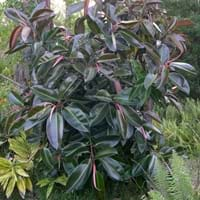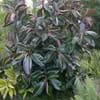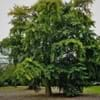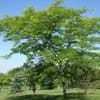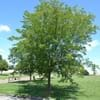Life Span
Perennial
Perennial
Origin
Southern Asia, Southeastern Asia, India, Nepal
Eastern Asia
Types
not available
Actinidia arguta, Actinidia giraldii, Actinidia hypoleuca
Number of Varieties
Not Available
Habitat
agricultural areas, Along Railroads, Coastal Regions, Forests, Roadsides, Scrubs, Suburban areas
Dappled Shade, open Woodlands
USDA Hardiness Zone
10-11
3-8
Sunset Zone
H1, H2, 16, 17, 19, 20, 21, 22, 23, 24
1a, 1b, 2a, 2b, 3a, 3b, 4, 5, 6, 7, 8, 9, 14, 15, 16, 17, 18, 19, 20
Habit
Upright/Erect
Vining/Climbing
Flower Color
Not Available
White, Ivory
Flower Color Modifier
Bicolor
Bicolor
Fruit Color
Yellow, Yellow green
Green, Yellow green
Leaf Color in Spring
Red, Dark Green, Crimson
Green, Dark Green
Leaf Color in Summer
Red, Dark Green, Crimson
Dark Green
Leaf Color in Fall
Red, Dark Green, Crimson
Dark Green
Leaf Color in Winter
Red, Dark Green, Crimson
Light Green
Leaf Shape
Elliptic to oblong
Oval
Plant Season
Spring, Summer, Fall, Winter
Spring, Summer, Fall
Sunlight
Full Sun, Partial Sun, Partial shade
Full Sun, Partial Sun
Type of Soil
Loam, Sand
Loam
The pH of Soil
Acidic, Neutral, Alkaline
Neutral
Soil Drainage
Well drained
Well drained
Bloom Time
Not Available
Spring, Late Spring, Early Summer
Tolerances
Not Available
Shade areas
Where to Plant?
Ground
Ground, Pot
How to Plant?
Seedlings, Vegetative Reproduction
Grafting, Stem Cutting
Plant Maintenance
Medium
Low
Watering Requirements
Keep ground moist, Requires a lot of watering
Average Water Needs, Requires regular watering
In Summer
Lots of watering
Regular watering required
In Spring
Moderate
Moderate
In Winter
Average Water
Average Water
Soil pH
Acidic, Neutral, Alkaline
Neutral
Soil Type
Loam, Sand
Loam
Soil Drainage Capacity
Well drained
Well drained
Sun Exposure
Full Sun, Partial Sun, Partial shade
Full Sun, Partial Sun
Pruning
Prune for shortening long shoots
Remove damaged leaves, Remove dead branches, Remove dead leaves
Fertilizers
don't fertilize in winter
Apply 10-10-10 amount, fertilize twice a year
Pests and Diseases
Mealybugs, Red blotch, Scale, Spider mites, Yellow Leaves
Botrytis head rot, Japanese Beetles, Leaf Rollers, Nematodes, Phytophthora, Root rot, Sclerotinia blight, Spider mites, Thripes
Plant Tolerance
Not Available
Shade areas
Flowers
Insignificant
Showy
Flower Petal Number
Not Available
Single
Foliage Texture
Bold
Medium
Foliage Sheen
Glossy
Glossy
Attracts
Not Available
Cats
Allergy
Asthma, breathing problems
Not Available
Aesthetic Uses
Showy Purposes
Cottage Garden
Beauty Benefits
Not Available
Not Available
Environmental Uses
Air purification, soil erosion prevension on hill slopes
Shadow Tree
Medicinal Uses
Not Available
Antioxidants, Fiber, Folate, Rich in Potassium, Vitamin C
Part of Plant Used
Latex
Fruits
Other Uses
Making rubber, Making tyres
Grown for shade
Used As Indoor Plant
Yes
No
Used As Outdoor Plant
Yes
Yes
Garden Design
Container, Feature Plant, Houseplant, Shade Trees, Tropical
Edible, Feature Plant, Vine
Botanical Name
FICUS elastica
ACTINIDIA arguta
Common Name
Rubber Plant
Hardy Kiwi
In Hindi
रबड़ का पौधा
हार्डी कीवी
In German
Ficus elastica
Hardy Kiwi
In French
Ficus elastica
kiwai
In Spanish
ficus
kiwi hardy
In Greek
ελαστικός φίκος
σκληραγωγημένα ακτινίδια
In Portuguese
fábrica de borracha
kiwi Hardy
In Polish
gumy roślin
hardy kiwi
In Latin
Flexilis herba
Hardy kiwi
Phylum
Tracheophyta
Magnoliophyta
Class
Magnoliopsida
Magnoliopsida
Family
Moraceae
Actinidiaceae
Clade
Angiosperms, Eudicots, Rosids
Angiosperms, Asterids, Eudicots
Tribe
Ficeae
Not Available
Subfamily
Not Available
Actinidiaceae
Number of Species
Not Available
Not Available
Season and Care of Ficus Elastica and Hardy Kiwi
Season and care of Ficus Elastica and Hardy Kiwi is important to know. While considering everything about Ficus Elastica and Hardy Kiwi Care, growing season is an essential factor. Ficus Elastica season is Spring, Summer, Fall and Winter and Hardy Kiwi season is Spring, Summer, Fall and Winter. The type of soil for Ficus Elastica is Loam, Sand and for Hardy Kiwi is Loam while the PH of soil for Ficus Elastica is Acidic, Neutral, Alkaline and for Hardy Kiwi is Neutral.
Ficus Elastica and Hardy Kiwi Physical Information
Ficus Elastica and Hardy Kiwi physical information is very important for comparison. Ficus Elastica height is 180.00 cm and width 90.00 cm whereas Hardy Kiwi height is 550.00 cm and width 90.00 cm. The color specification of Ficus Elastica and Hardy Kiwi are as follows:
Ficus Elastica flower color: Not Available
Ficus Elastica leaf color: Red, Dark Green and Crimson
Hardy Kiwi flower color: White and Ivory
- Hardy Kiwi leaf color: Green and Dark Green
Care of Ficus Elastica and Hardy Kiwi
Care of Ficus Elastica and Hardy Kiwi include pruning, fertilizers, watering etc. Ficus Elastica pruning is done Prune for shortening long shoots and Hardy Kiwi pruning is done Remove damaged leaves, Remove dead branches and Remove dead leaves. In summer Ficus Elastica needs Lots of watering and in winter, it needs Average Water. Whereas, in summer Hardy Kiwi needs Regular watering required and in winter, it needs Average Water.
